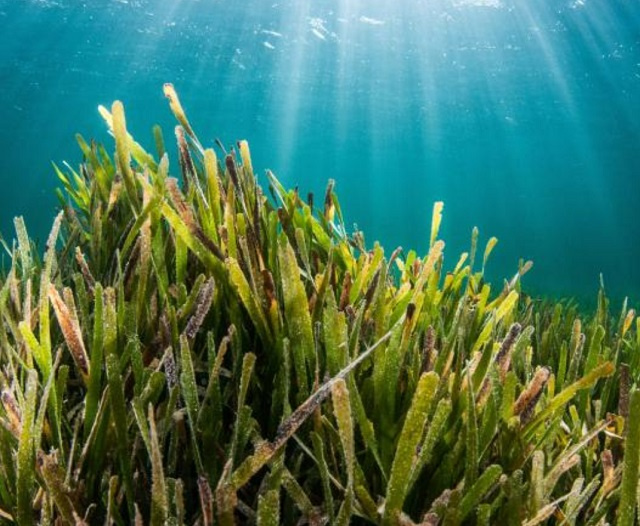Blue Carbon commitment: Seychelles' seagrass meadows mapped

Faure told reporters that this will mean that Seychelles will now be able to comply with its Blue Carbon commitment. (James Michel Foundation)
(Seychelles News Agency) - The Seychelles Conservation and Climate Adaptation Trust (SeyCCAT) on Tuesday revealed three maps of seagrass meadows following a two-year mapping exercise.
The mapping exercise was carried out around the main islands - the three most populated islands of Mahe, Praslin, and La Digue. It was also done around the outer islands of Astove, Cosmoledo, Alphonse and St. Francois.
The University of Oxford was contracted by the Pew Charitable Trusts to coordinate the scientific mapping component of the project. The university worked with the German Aerospace Centre to produce the baseline satellite map that will be refined by the ground-truthing process.
The newly completed maps detailing the distribution of mangrove and seagrass ecosystems were presented by SeyCATT at the opening of a two-day workshop at Savoy Resort and Spa Hotel.
With the three maps, policymakers, planners and others involved in the development of the Blue Economy in the country will now have data collected during the mapping exercise.
 |
| The maps were revealed in a workshop on Tuesday. (Rita Joubert-Lawen) Photo License: CC-BY |
The coastal wetlands and climate change project manager of SeyCCAT, Annick Faure, told reporters that this will mean that Seychelles will now be able to comply with its Blue Carbon commitment.
"Seychelles has made a commitment to protect 50 percent of seagrass by 2025 which will increase to become 100 percent by 2030. With the mapping, the authorities will know where there is seagrass and where we must start processes and procedures to continually protect seagrass," said Faure.
She added that SeyCCAT is not completely sure "to whether those concerned will take the information we have presented into account when planning to undertake new development."
The Seychelles' seagrass and carbon mapping project cost around $1 million and was done in three main phases: mapping seagrass using satellite imagery; data field collections on seagrass meadows; and data analysis on seagrass extend and carbon stock.
Prior to the exercise, Seychelles, a group of 115 islands in the western Indian Ocean with an Exclusive Economic Zone (EEZ) of 1.4 million square kilometres, had very limited data on its seagrass meadows.
SeyCCAT is finalising the data with all the carbon stocks in order to hand them over to the Geographical Information Systems (GIS) section in the department responsible for the environment – which is also the second phase of the project known as socialisation of the data.
In this phase, all local partners will have the information on hand when making real-life decisions.
"The data will then be filtered out to the relevant departments and agencies in order for them to hopefully take into consideration," said Faure.





